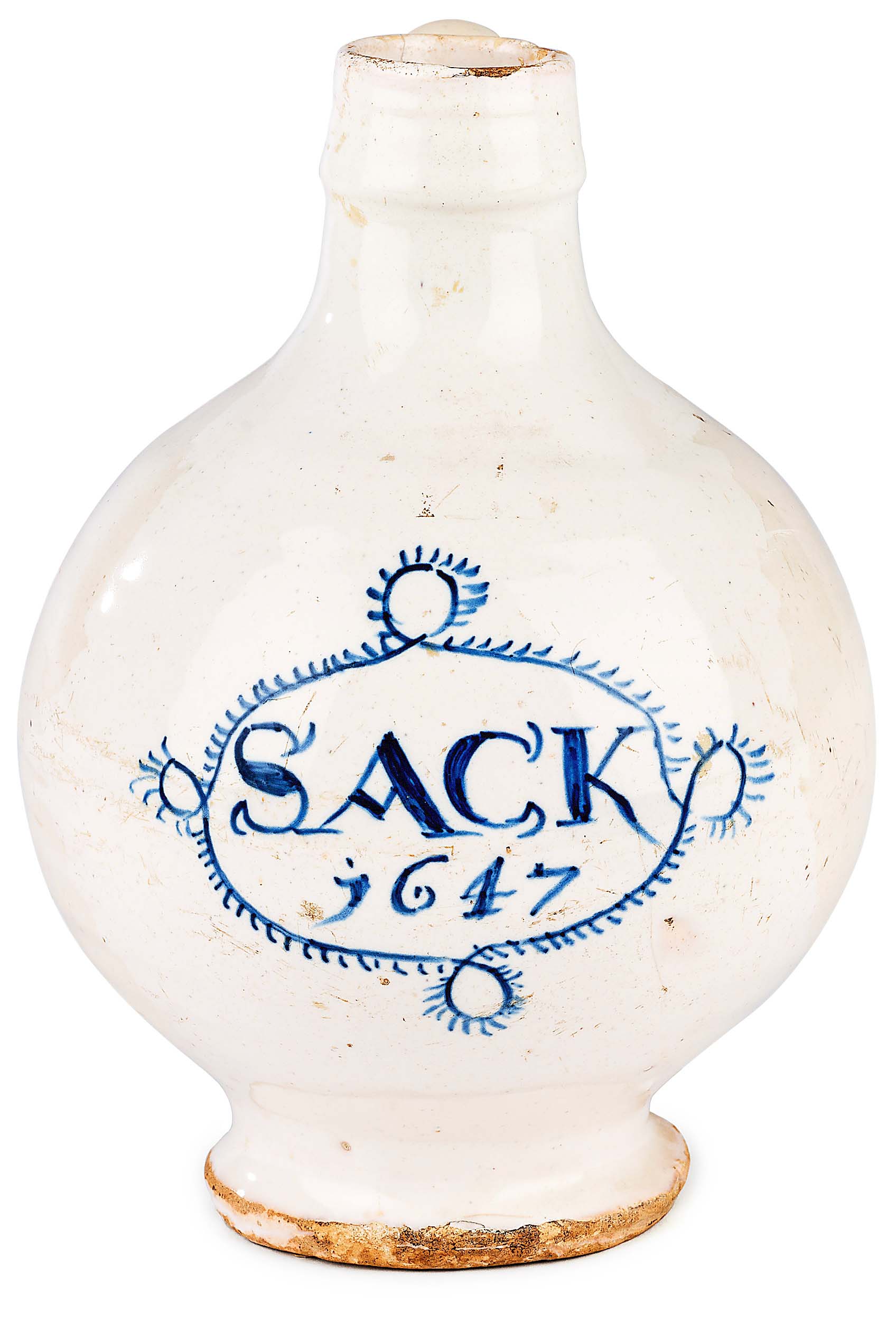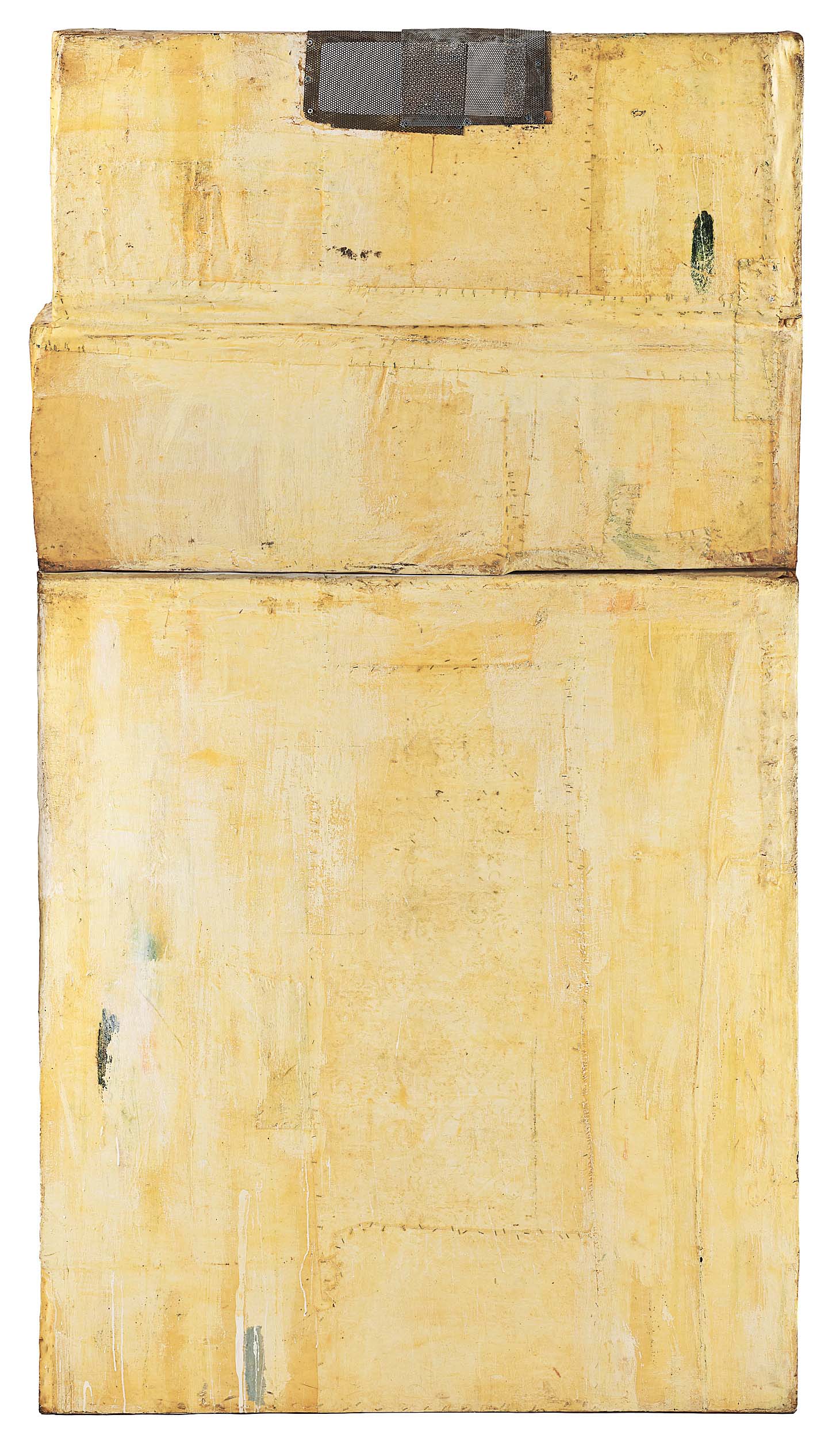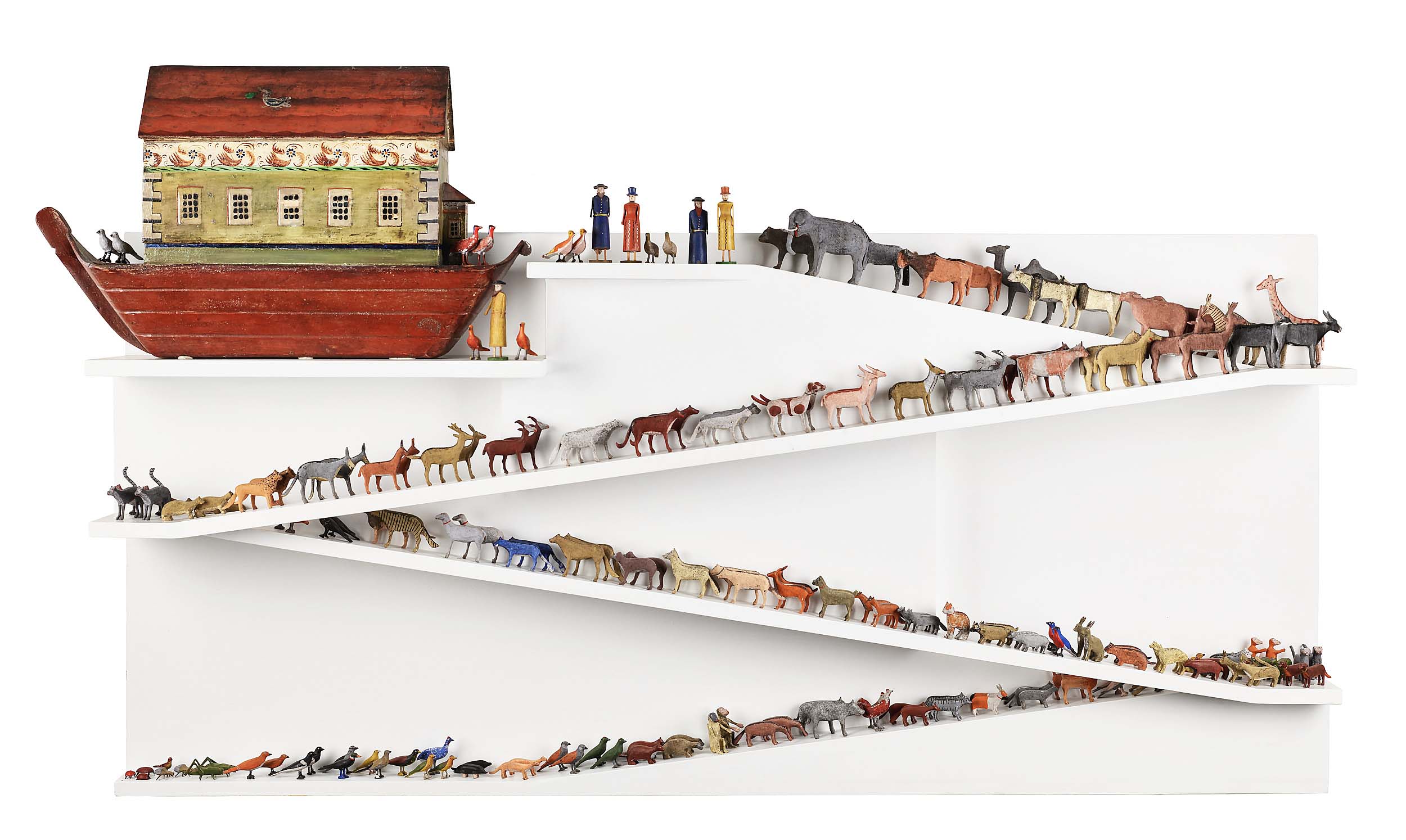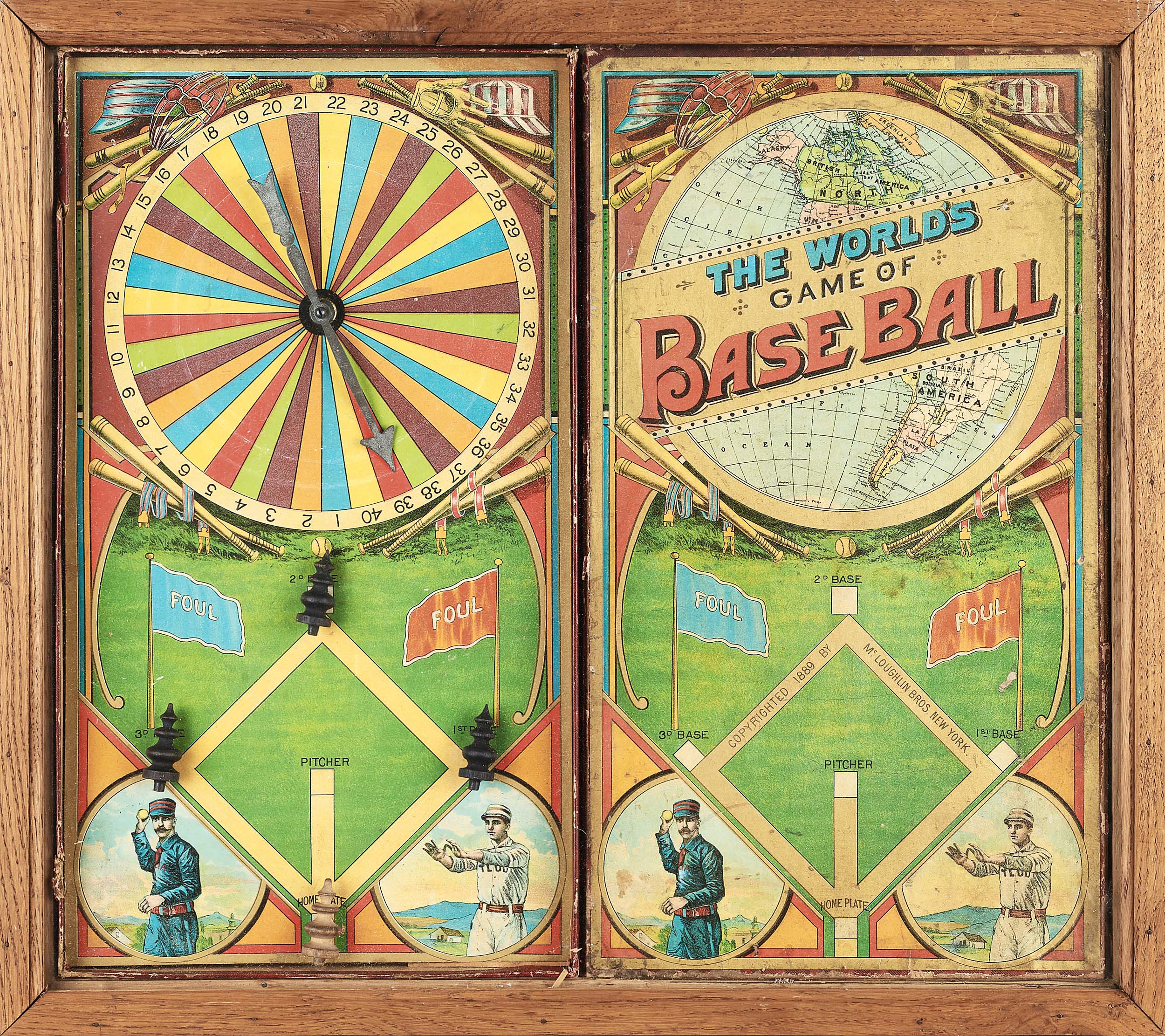
Earning $40,000 was a Pennsylvania sgraffito mug, dated 1797, probably Montgomery or Berks County. It had songbird and flower designs and measured 5½ by 5 inches ($8/12,000).
Review by Carly Timpson
DOWNINGTOWN, PENN. — Pook & Pook Auctioneers and Appraisers conducted an auction of Americana and international antiques on April 18 and 19. Among the offerings in this 824-lot sale were important pieces of stoneware, paintings, timepieces, folk art and furniture. “Pook & Pook showed strength in a very diverse offering of material in the April Americana and International sale. Strong results across our typical Americana and folk art were bolstered by vigorous bidding from the European market,” said Jamie Shearer, vice president of Pook & Pook. Resulting in a 97 percent sell-through rate, the auction exceeded expectations across the board and realized $1,145,617. Deirdre Pook Magarelli, the firm’s president, reported: “It was a fabulous sale with a huge variety of material. We’re very happy with the results.”
The sale’s highest bid was placed for a Pennsylvania sgraffito mug, which realized $40,000 against a modest estimate of $8/12,000. Likely from Montgomery or Berks County, the mug’s yellow and green mottled body was incised with songbirds and tulips. Below the dotted rim, situated between the two primary flowers, was the date “1797.” The 5½-inch-tall mug had a strap handle with a stylized tulip design on it. With provenance to Mary Snyder Antiques, Reinholds, Penn., the mug sold to a Pennsylvania collector after active bidding from telephones and the internet.
Also soaring well beyond its estimate to earn a top finish was a circa 1670 Delftware master salt. Shearer commented that “Delftware garnered a great deal of active bidding from our overseas clientele creating impressive results.” The white bowl, raised on a conical foot, had a ruffled piecrust rim with three vertically protruding scrolls. Sold by Christie’s in 2011, this Southwark, London, dish is one of only three recorded piecrust salts. Estimated $3/5,000, the rare salt was bid to $35,000 and, according to Shearer, was “purchased by a Western collector who bought several pieces of Delftware.”

This English Delftware sack wine bottle dated 1647, 7½ inches, more than tripled its estimate, finishing at $10,000 ($2/3,000).
Other English Delftware offerings included a shield-shaped pill slab and a sack wine bottle. The pill slab, circa mid-Eighteenth Century, was inscribed “Opiferque per orbem dicor,” which is a line from Ovid’s “Metamorphoses” that translates to “Throughout the world they think of me as a bringer of help.” In blue paint above the motto, the white slab was illustrated with the coat of arms of the Society of Apothecaries — Apollo slaying a dragon, flanked by rearing unicorns and with a small rhinoceros centered at the top of the crest. A European trade buyer who was a very active bidder on Delftware won the pill slab for $11,875.
The sack wine bottle was of typical form with a bulbous body, narrow neck and rounded handle, but it was decorated with an unusual, feathered cartouche around the bold blue painted “SACK/1647” marking. Despite having a restored handle and hairline cracks to the rim, the 7½-inch-tall bottle was sold to a Florida bidder for $10,000, more than three times its high estimate.
Earning $15,000, Walter Stuempfig’s “Marshland” exceeded its $7/9,000 estimate and became the only painting to finish among the top 20 lots in the auction. Painted with predominantly blue-green hues and depicting several shirtless teenage boys by the water’s edge, the framed oil on canvas had provenance to Maynard Walker Gallery in New York. A Pennsylvania collector bidding on the phone prevailed for the painting.

“No Patience for the Past” by Lawrence Carroll (Australian/American, 1954-2019), 1989, oil, wax, staples, canvas and metal on wood, 108 by 60 by 12 inches, had provenance to Stux Gallery, New York, and sold for $14,080 ($10/15,000).
A sculptural painting by the Australian-American artist Lawrence Carroll, best known for his deconstructed abstract “table paintings” made from scrap wood and cardboard, was sold to a Southern dealer for $14,080. The piece, titled “No Patience for the Past,” was 9 feet tall, 5 feet wide and 1 foot deep. Created using oil, wax, staples, canvas and metal on wood, it had provenance to the Stux Gallery in New York.
A pair of Nineteenth Century figural cast iron owl gateposts were “bought by a very happy Washington, DC, collector who ‘has the perfect spot for them,’” according to Shearer. Possibly by Albany Iron Works, the two owls stood, facing forward, on a slightly beveled square platform. Originally found in an Albany, N.Y., estate, sold by Northeast Auctions in 2002, and from a Lancaster County, Penn., collection, the weathered birds were sold in this auction for $13,750.
Another figural bird lot, this one a carved and polychrome painted eagle by German immigrant folk artist Wilhelm Schimmel. Differing from Schimmel’s typical style, this eagle’s wings were tucked to its sides rather than spread out with sawtooth carvings. Standing atop a dark green mount, the eagle’s primarily white body was spotted with red, yellow and black paint. Remaining local after selling to a Pennsylvania collector for $8,125, the small bird had provenance to the Naomi Wood Trust, Philadelphia.

A Mahantongo Township, Schuylkill County, Penn., ink and watercolor fraktur birth certificate for Catharina Klein (b 1818), signed “David Ramberger 1827,” 12 by 14½ inches framed, had provenance to The Collection of Max and Polly DeHart, Milton, Penn., and earned $8,125 ($3/4,000).
Pennsylvania German items also included a Mahantongo Township, Schuylkill County fraktur birth certificate. Certifying the 1818 birth of Catharina Klein, the framed document was signed “David Ramberger 1827” and illustrated in ink and watercolor with blue and red angels, eagles, flowers, hearts and ribbons. The birth certificate had provenance to the collection of Max and Polly DeHart, Milton, Penn., and will stay in the state after selling to a local collector and dealer for $8,125.
Several Pennsylvania clocks made their marks on bidders with two Chippendale tall case clocks achieving top-16 prices. The more valuable of the two was a circa 1765 Philadelphia Chippendale walnut tall case clock signed “Jacob Godshalk Philadelphia” on the 30-hour brass face movement and on a round emblem above it. The walnut case was highly adorned with geometric inlaid designs on the door and had several carved sunflowers at the base of three finials atop the bonnet. Initialed “CERB” beneath the arch of the door, the highly detailed clock brought $12,500 after an in-person trade bidder prevailed. The other clock, also a walnut Chippendale example, sold to a local collector for $7,500. This one had an eight-day movement with a painted face that was inscribed “Thomas Wildbahn Reading.” The face was painted with floral, fruit and bird illustrations and had a pierced bonnet with three spindle finials.

This late Nineteenth Century carved and painted Noah’s Ark with nearly 200 animals and figures with a custom display shelf brought $10,625 ($6/9,000).
A late Nineteenth Century folk art carved and painted Noah’s Ark with nearly 200 animals and figures was sold with a custom display shelf so that all the animals could be lined up “to get on the boat.” Though some of the animals were just singles and there was significant touch-up to the ark, the set was claimed by a trade bidder in the salesroom for $10,625.
After an exhaustive battle between a phone and an internet bidder, a Nineteenth Century miniature painted doll’s armchair was won by the phone bidder, a trade buyer, for $9,375 — well above the chair’s $600 high estimate. The old mustard surface was accented with red and black painted pinstripe designs and there were no apparent repairs.

This McLoughlin Brothers spinner board game, The World’s Game of Base Ball, was made to commemorate the first World Exhibition tour of baseball. It earned $7,500 ($3/5,000).
A Southern collector who left an absentee bid hit a home run for a McLoughlin Brothers spinner board game titled The World’s Game of Base Ball. Made in 1889 to commemorate the first Spalding World Tour, an exhibition baseball tournament that traveled from Chicago to the British Isles, making stops in New Zealand, Australia, Ceylon, Egypt, Rome and Paris along the way. The teams depicted on the vibrantly lithographed game board and cover were represented by illustrations of two players who are likely Charles Comiskey and Robert Ferguson. The colorful game was complete with a 40-sectioned spinner insert, rules on the cover’s underside and four turned-wood playing figures. It soared out of the park for $7,500.
Prices quoted include the buyer’s premium as reported by the auction house. According to Ron Pook, the company’s founder, “The building is stacked full of impressive things to cross the auction this summer and fall.” Up next for Pook & Pook on May 17 is the single-owner sale of The Collection of Barry D. Hogan, a Lancaster, Penn., collector of Pennsylvania folk art, early Americana and early American glass. For information, 610-269-4040 or www.pookandpook.com.




















